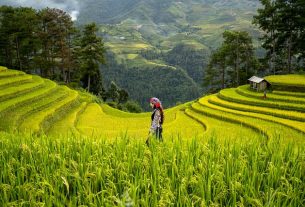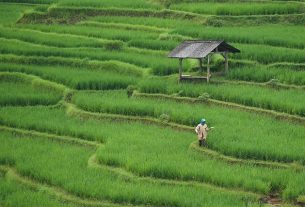Did you know that pests and diseases cause farmers to lose up to 40% of their crops each year? Farmers are always looking for better ways to manage their crops, and drones are one of the best new tools! Drones give farmers data. This information helps them make smarter choices. These choices help improve crop health, increase yields, and manage resources better. Let’s explore how drones are changing modern farms.
Why Drones are a Game Changer for Modern Farms
Drones are not just cool gadgets. They bring big changes to farming. They make work faster and easier. Plus, they help farmers make better decisions.
Increased Efficiency and Reduced Costs
Drones automate tasks. Forget walking through fields for hours. A drone can do the same job in minutes. This saves time and money on labor. With drones, you can cover more ground, faster. Less time spent scouting fields means more time to focus on other important tasks!
Enhanced Data Collection and Analysis
Drones collect different types of data. Multispectral imagery shows crop health. Thermal imaging reveals water stress. This data helps farmers understand their fields better. Smart farming means data-driven choices. Drones provide the data needed to make those choices.
Early Problem Detection
Drones spot problems early. Catch diseases or pests before they spread. Identify irrigation issues before they cause major damage. Early detection prevents big losses. A quick drone flight can save an entire crop.
Simple Drone Applications for Crop Improvement
Drones offer many practical uses for improving crops. They help with monitoring crop health, precision irrigation, and managing pests. Let’s look at some simple things you can do.
Crop Health Monitoring
Drones with multispectral cameras show plant health. They use NDVI (Normalized Difference Vegetation Index). NDVI highlights areas needing attention. Red areas mean unhealthy plants. Green areas show healthy plants. Use this data to focus on problem spots.
- Identify stressed plants early.
- Track crop growth over time.
- Optimize fertilizer use.
Precision Irrigation
Thermal imaging finds water stress. Drones create irrigation maps. These maps show where water is needed most. This helps save water and improve crop yields.
- Detect leaks in irrigation systems.
- Ensure even water distribution.
- Reduce water waste.
Pest and Disease Management
Drones spot pest and disease issues early. Use drone images to target pesticide applications. Only treat affected areas. This reduces pesticide use.
- Identify pest infestations quickly.
- Monitor disease spread.
- Minimize environmental impact.
Choosing the Right Drone for Your Farm
Selecting the right drone depends on your needs. Think about flight time, camera quality, and ease of use. Consider your budget and what you want to achieve.
Key Features to Consider
- Flight Time: Longer flight times cover more area.
- Camera Quality: High-resolution cameras provide better images.
- Sensor Types: Multispectral and thermal sensors offer different data.
- Ease of Use: Simple controls make flying easier.
Popular Drone Models for Agriculture
- DJI Drones: Known for reliability and ease of use. They are a great choice for beginners.
- Parrot Drones: Offer advanced imaging options. These are suitable for detailed analysis.
Budget Considerations and ROI
Drones require an initial investment. But, they also offer a big return. Reduced costs and increased yields can offset the price. Think about the long-term benefits. Drones will save you money over time.
Overcoming Challenges and Best Practices for Drone Use
Using drones involves challenges. It’s important to know about rules and keep your data safe. Learn how to take care of your drone.
Regulatory Compliance and FAA Guidelines
Know the rules for drone operation. The FAA sets guidelines for flying. Follow these rules to avoid fines. Make sure you have the necessary certifications.
Data Security and Privacy
Protect your farm data. Drones collect sensitive information. Secure your data to prevent unauthorized access. Use strong passwords and encryption.
Maintaining and Troubleshooting Your Drone
Keep your drone in good shape. Regular maintenance extends its life. Learn basic troubleshooting steps. This will save you time and money on repairs.
The Future of Drones in Agriculture
Drone technology keeps improving. AI and better sensors are on the way. Drones will integrate with other farm tools.
Advancements in Drone Technology
AI-powered analysis is coming. Drones will fly themselves. Advanced sensors will collect even more data. Get ready for smarter farming.
Integration with Other Farm Technologies
Drones can work with GPS and other sensors. This creates a complete farm management system. Data from different sources helps you make even smarter choices.
The Potential for Sustainable Farming Practices
Drones help reduce waste and improve efficiency. This supports sustainable farming. Use fewer resources. Protect the environment.
Conclusion
Drones provide actionable data. Farmers are able to optimize crop health and yields. They also help manage resources. Are you ready to explore drone tech? Start using drones on your farm!
Key Takeaways:
- Drones save time and money.
- Drones provide valuable data for better decisions.
- Drones help detect problems early.
- Drones support sustainable farming.



